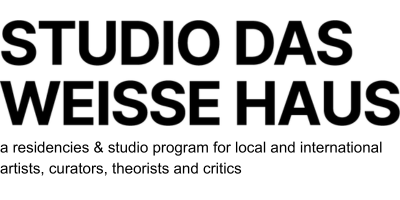Weekly conversations ...with Anne Faucheret

Anne Faucheret is an art historian and art critic. She has been a curator at Kunsthalle Wien since 2014, where she has curated among others the group shows The Promise of Total Automation (2016), Work it, feel it! (2017) or Saâdane Afif’s solo show, This Is Ornamental (2018). From 2010 to 2015, she was a curatorial advisor for visual arts at the steirischer herbst festival, Graz, Austria, where she organized exhibitions including Adaptation (2012) and Liquid Assets (2013) and co-curated the 24/7 marathon-camp Truth is concrete (2012). She regularly contributes to art magazines and artist publications.
In 2019 she was part of the jury that chose who would get to do an exhibition at das weisse haus within the scope of the Erste Bank ExtraVALUE Art Award 2019. She was kind enough to tell us a little bit about her experience with this prize and also her fascination with Karine Fauchard’s Work, which is exhibited at das weisse haus until November 09, 2019.
Can you talk a little bit about your experience with the Erste Bank ExtraVALUE Art Award 2019?
It was a wonderful opportunity to exchange in depth about contemporary artistic practices with two colleagues, as well as with the das weisse haus team through the three–step selection procedure.
After receiving all of the applications in electronic form, and reviewing them individually in order to map the practices, we collectively created a first shortlist, consisting of ten artists we anticipated for the New York prize, as well as ten artists for the Vienna prize. We then had the chance to meet the artists in person (thanks to all of them for committing so much time and energy) for a short interview where they would present a project specifically conceived for the space that they were nominated for.
This procedure was particularly interesting because we could on the one hand discuss their practice in general, and on the other hand debate their specific proposition for the given space – always having in mind the relevance of receiving this specific prize at this moment in their career. The applications were all of high quality and it was not an easy task to finally name the two winners.
How was your attention drawn to Karine’s work?
Our first encounter was at Kunsthalle Wien, during a party after an exhibition opening. I first met the person and afterwards the artist. I visited her studio some months later, and then became deeply interested in her very original practice of painting and material collecting.
What fascinates you about her work?
The first time I visited Karine’s studio I was overwhelmed. Not so much by the works themselves but rather by her approach to her own practice, her way to speak about the works and contextualize them, the series, the materials she uses and their history. I was very much intrigued by this feeling of not being able to grasp everything, as I was entering a rich, multi-referenced and radically personal, existential universe.
The first thing fascinating me was her artistic economy: the way she collects, references, archives, uses, destroys, and re-uses things and specific materials, regularly coming back to them and implementing them in new constellations. There are some materiologic (in a sense of a science/knowledge around materials and matter) and metaphoric obsessions she indulges into and which are recurring in her work – a bit like a ritournelle regularly resurfacing in a song, sometimes appearing in the same form, sometimes re-worked (slightly or radically) : the geologic, the telluric and the unseen earthen forces, the mathematical, the precariousness and fragility (without candour), the aesthetics of the fragment, of the interstice and the crack, just to quote a few. Her art is neither flamboyant nor grandiloquent nor luring. Its complexity does not unfold immediately but remotely, after a back and forth between the works, between the works and the space, and through a concentrated and focused observation as well as a synaesthetic sensitivity.
Can you talk a bit about the exhibition?
I did not know Karine’s sculptural work made of unburned clay (which she experimented in the first time in an exhibition space) but I knew quite well her painting series Vulkanische Aue (she began in 2017)– which is interestingly enough the name she also gave to her whole exhibition at weisse haus. This is the first very uncommon character of this peculiar exhibition: it is not a collection and exhibition of selected works but rather an overall artistic installation. The constant dialogue between the paintings and the clay objects/figures through the circulation of shapes, colours, compositions, motives, materials and references reinforces that.
Also the contrast between the fragility and precariousness and at the same time the strength emanating from the whole intervention, as well as the contrast between moments of chaos and moments of discrete, precise and space specific occupation are very interesting to me.
Last but not least, the openness of the installation to its own entropy, the way they embrace their possible and very likely destruction by an inattentive shoe, by lack of humidity, or by any other shift in the atmosphere gives the exhibition a unique and very peculiar character.
